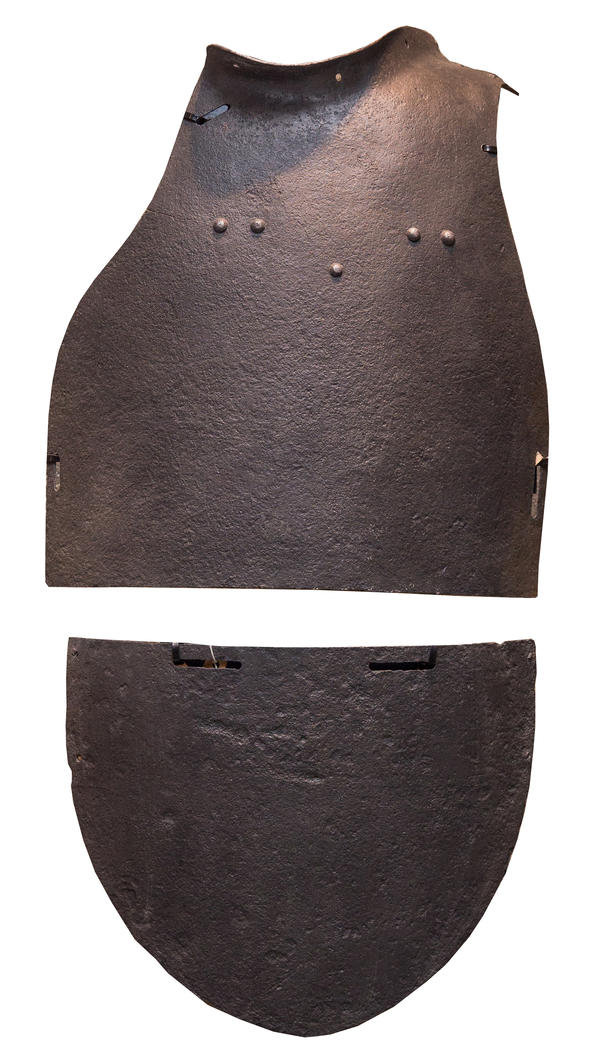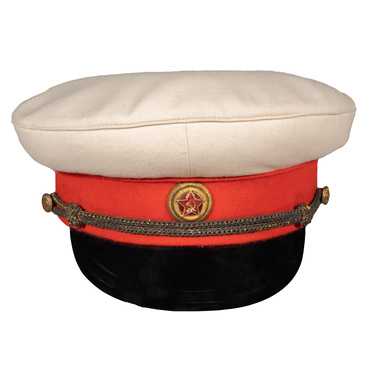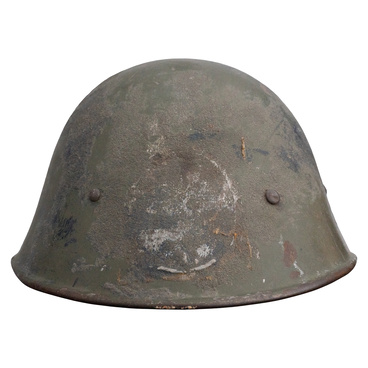During the Great Patriotic War, Soviet soldiers used various personal protective equipment. The museum’s exhibition houses a steel breastplate SN-42. It was widely used in the Red Army.
The history of this item of protective clothing spans several decades. Similar cuirasses were used by the armies of Britain, Germany, and France in World War I.
In the 1930s, Soviet designers started developing body armor to protect soldiers against bullets and fragments of shrapnel. It had to be made of steel with necessary ductility and strength characteristics. This is how the steel breastplate was designed. After the first trials, it was adopted into use.
In 1943, a decision was made to supply such breastplates to assault engineering brigades. They were later occasionally referred to as the “cuirass infantry”. The breastplate made of thin armor steel was the distinctive equipment of these troops.
Steel breastplate SN-42 consisted of three steel plates that were held together by leather belts and were curved at the waist. The plate was made of steel 36SGN with a thickness of 1.8 to 2.2 mm and weighed between 3.3 and 3.5 kg. For convenience, designers of Research Institute No. 48 added a textile lining and a cut-out so that the soldier could rest the firearm against the right shoulder when aiming.
Such breastplates were used during the Battle of Stalingrad. They were available in several modifications, and their smooth steel surface protected the soldiers against rifle bullets and bayonet attacks. The breastplate could be used in three ways: to protect the torso when moving, to cover yourself when crawling, and to protect any areas of the body. Even though it was mass-produced, the breastplate was a unique item of equipment.
Despite the popularity of breastplates, they had certain drawbacks which were described by Marshal of the Engineer Troops Mikhail Vorobyov. The plates were heavy, inconvenient, and not strong enough, and were only available in several sizes. Moreover, they did not protect the sapper’s back on the battlefield.
The history of this item of protective clothing spans several decades. Similar cuirasses were used by the armies of Britain, Germany, and France in World War I.
In the 1930s, Soviet designers started developing body armor to protect soldiers against bullets and fragments of shrapnel. It had to be made of steel with necessary ductility and strength characteristics. This is how the steel breastplate was designed. After the first trials, it was adopted into use.
In 1943, a decision was made to supply such breastplates to assault engineering brigades. They were later occasionally referred to as the “cuirass infantry”. The breastplate made of thin armor steel was the distinctive equipment of these troops.
Steel breastplate SN-42 consisted of three steel plates that were held together by leather belts and were curved at the waist. The plate was made of steel 36SGN with a thickness of 1.8 to 2.2 mm and weighed between 3.3 and 3.5 kg. For convenience, designers of Research Institute No. 48 added a textile lining and a cut-out so that the soldier could rest the firearm against the right shoulder when aiming.
Such breastplates were used during the Battle of Stalingrad. They were available in several modifications, and their smooth steel surface protected the soldiers against rifle bullets and bayonet attacks. The breastplate could be used in three ways: to protect the torso when moving, to cover yourself when crawling, and to protect any areas of the body. Even though it was mass-produced, the breastplate was a unique item of equipment.
Despite the popularity of breastplates, they had certain drawbacks which were described by Marshal of the Engineer Troops Mikhail Vorobyov. The plates were heavy, inconvenient, and not strong enough, and were only available in several sizes. Moreover, they did not protect the sapper’s back on the battlefield.



